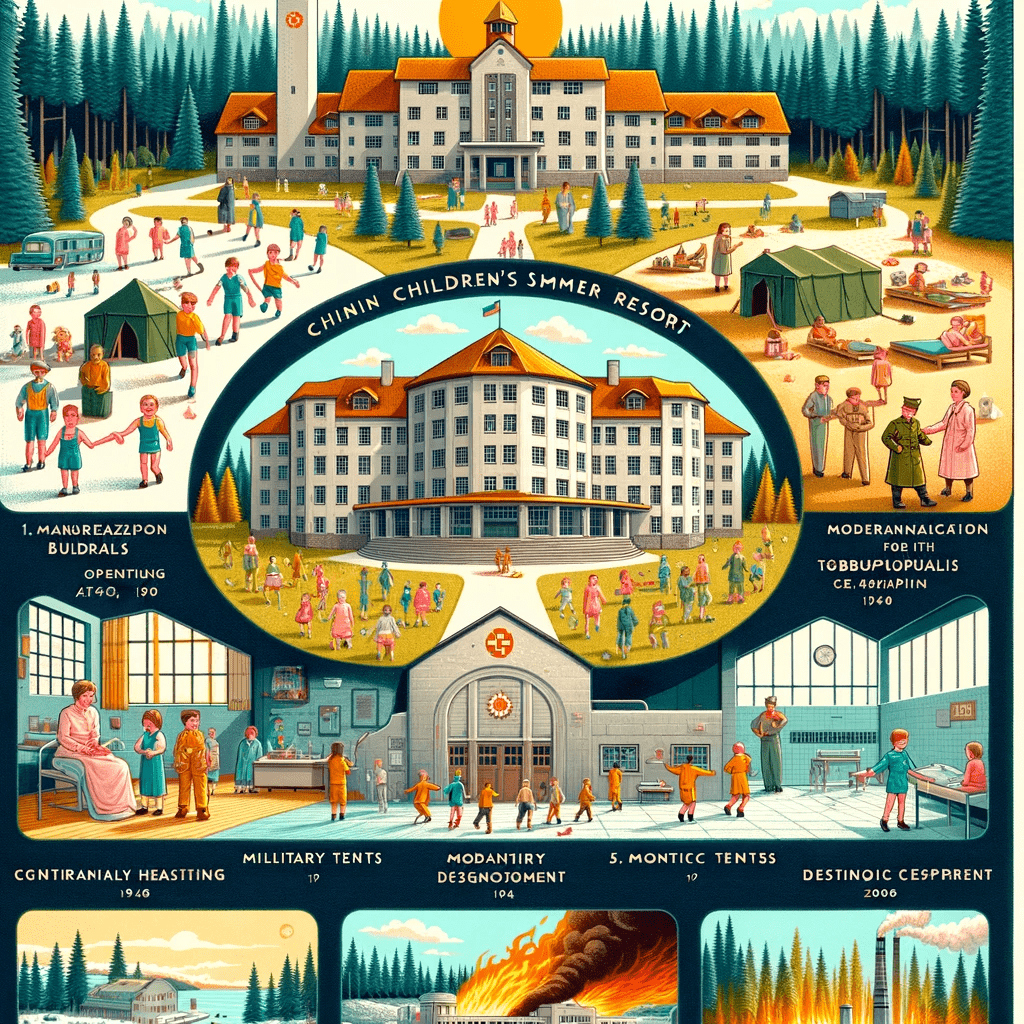In 1906, the Association for the Care of Neurologically and Mentally Disabled Jews in Poland was established on the initiative of doctors Adam Wiezel, Samuel Goldflam, Ludwik Bregman, engineer Adolf Weisblat, Majer Rudstein, and judge Arnold Szpinak.
In 1908, the Association began the implementation of the project for the first social psychiatric hospital in Otwock. Thanks to Zofia Endelman, who donated all her jewelry for this purpose, a 30-acre plot of land was purchased, and the construction of Zofiówka began. The construction process was supervised by engineer Adolf Weisblat, using an architectural design by engineer Henryk Stifelman.
In 1908, the male pavilion was built. It was a two-story building with three spacious halls on the ground floor, including a dining room, a dormitory for patients, a waiting room for visitors, a buffet, toilets, a storage room, and a special room for cleaning work clothes.
The second floor housed three bathrooms. Each bathroom had 10-15 beds, with a separate bed for the nurse. There were also two isolated rooms for patients with psychiatric disorders, rooms for the doctor, a room for the guard, and sanitary facilities.
In 1910, thanks to a donation from Herman Poznański, a pavilion for women was built, located 100 steps away from the male pavilion. It was a single-story building consisting of two spacious bedrooms connected by arcades, a salon, a doctor’s office, a storage room, and sanitary facilities.
In 1926, with a loan from the Municipality, another pavilion was opened, providing space for 60 beds.
By 1937, Zofiówka had 275 beds.
The first director of Zofiówka was Dr. Samuel Goldflam (1852-1932), a neurologist and a pioneer of microscopic studies of the nervous system.
Zofiówka usually admitted mentally ill patients who were still calm and capable of performing various types of work. Most patients were treated free of charge, financed by the Association or the Municipality. Only a few patients were treated at the expense of their families if they declared regular donations to the Association.
On December 1, Zofiówka became part of the recreational ghetto.
On August 19, 1942, the liquidation of the ghetto began. It was a tremendous tragedy for the Jewish patients and staff. 108 patients and three doctors were murdered. Some were transported to extermination camps, a few managed to escape (mainly Miller), while others committed suicide (Dr. Lewinówna, Dr. Maślanko, Mgr. Lichtenfeld).
In 1943, the Germans planned to establish the Lebensbornheim – Eastern Center in Zofiówka. Medical equipment was to be transported from the ghetto to Warsaw with the consent of the First Officer of the SS and Police of the General Government. Both buildings were supposed to accommodate around 100 mothers and 150 children. One was to serve as a maternity ward, and the other as a nursery and home for children. One of the goals of the center was the German education of Polish children and their preparation for adoption by German families.
These terrible plans were never realized.
After the Germans withdrew in 1944, Zofiówka was taken over by the Red Army. On June 11, 1946, it was handed over to the administration of Otwock. After renovation and adaptation, Zofiówka became the Central Center for Socialist Education, also known as the Central School for Actions of the Polish Youth Union (ZMP).
In 1955/1956, the Public Tuberculosis Sanatorium named after Stefan Okrzeja was opened here. It was intended for young people over the age of 15. During the treatment, all patients attended a secondary school organized within the sanatorium. After completing the educational process, they could obtain a high school diploma. The sanatorium had 250 beds and employed highly qualified medical staff and teachers.
In 1967, the Sanatorium became part of the Feliks Dzierżyński Sanatorium and from that moment on, it treated only adults suffering from pulmonary tuberculosis.
In 1985, the Sanatorium returned to its original purpose and became a department of the Neuropsychiatric Care Team in Zagórze. Due to an excess of referrals from the Children’s Mental Health Clinic, a decision was made to establish a school in Zofiówka, covering classes from V to VIII (ages 11-14).
In 1995, the Youth Addiction Therapy Department was established in Zofiówka.
For years, the buildings of Zofiówka remained abandoned and in ruins.
The division of the property is currently the subject of discussion between the Religious Group, the Marshal of the Voivodeship, and the County Administration.






